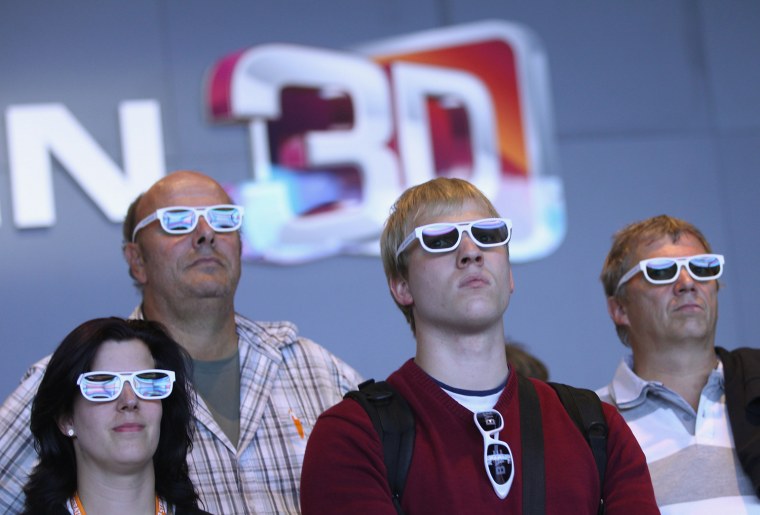TV sports in 3D was supposed to be a slam dunk, but viewers never got the picture. And, then there were those stupid-looking glasses, too.
This week, ESPN acknowledged the future for in-your-face screen action looks dim when it announced it was pulling the plug on ESPN 3D, almost three years after launching it with considerable fanfare.
“I would say the 3D network was dead on arrival,” said David Miller, a senior analyst at B. Riley & Co. “The proliferation of 3D networks had to depend on selling 3D glasses, and no one wanted to buy 3D glasses.”
“The whole problem with 3D TV is it was a solution to a problem consumers didn’t have,” said James McQuivey, a media analyst at Forrester Research.
ESPN and ABC Sports president George Bodenheimer had called 3D a “win for fans” in a statement about the channel’s launch, saying it “puts ESPN at the forefront of the next big advance for TV viewing."
Unfortunately, it was a big advance nobody really watched. “Due to limited viewer adoption of 3D services to the home, ESPN is discontinuing ESPN 3D,” spokeswoman Katina Arnold said via email.
“Nobody knows more about sports in 3D than ESPN, and we will be ready to provide the service to fans if or when 3D does take off,” she said.
Analysts say that’s unlikely. While movies in 3D have become popular, the technology never got popular enough to make the transition from the multiplex to the living room. "I felt like sports had the best chance,” said Ben Arnold, director and industry analyst at the NPD Group. “It’s probably just a broader symptom of consumers just not being interested in 3D.”
Although sales of 3D TVs are on the rise, he called this a “false positive.” More manufacturers are throwing in 3D capability on smaller and cheaper sets, but people aren’t using the feature. In just two years, NPD research found that the number of people interested in buying 3D TVs within six months dropped by 10 percentage points, down to 14 percent.
3D also debuted in a lackluster economy when prices of conventional flat-screen TVs were plunging. Many consumers went for big and cheap rather than paying a premium for a relatively unknown technology.
And the complexity of that technology isn’t winning 3D TV many fans either. In an era where media consumption is getting easier and more intuitive, 3D TV isn’t. It has a more narrow viewing range than conventional flat-screen TV and requires the viewer to sit upright (no napping on the couch on game day). Plus, people hate wearing the glasses, which can be goofy-looking and uncomfortable.
Nobody seemed to consider how people’s watching habits, particularly with sports, clashed with the technology’s limitations. For instance, a fan couldn’t just invite a bunch of friends over to watch a game: Everyone would have to have their own pair of glasses, and only a few people would be at an optimal angle to the screen to get a good viewing experience.
“It’s just running against the current of technology today,” McQuivey said. “It started to really make 3D unattractive.”
Tracking down 3D programs also isn’t simple. Arnold pointed out that the delivery of 3D content is fragmented. There isn’t a centralized place where a viewer can go to get access to all of the 3D content available to them.
ESPN 3D’s programming mix also might not have been appealing enough to gain traction, some suggest. “I think they would’ve had a shot if they had NFL games,” said Gary Merson, editor of HDGuru.com.
ESPN 3D featured college sports, extreme sports, soccer and more niche offerings. Without more mainstream events, “You probably won’t attract large-enough of an audience to make it worthwhile,” said Eric Wold, an analyst at B. Riley & Co. The cost to film in 3D is incrementally higher because it takes additional cameras and crew, which means a bigger audience — not a smaller one — is necessary to recoup the additional cost.
ESPN wouldn’t say how much parent company The Walt Disney Company invested in ESPN 3D, but Miller speculated it might be enough to trigger a write-down.
The future of at-home 3D programming looks fuzzy, and even special glasses aren’t going to bring that picture into focus. “I don’t have high hopes for consumers adopting it,” NPD's Arnold said.
